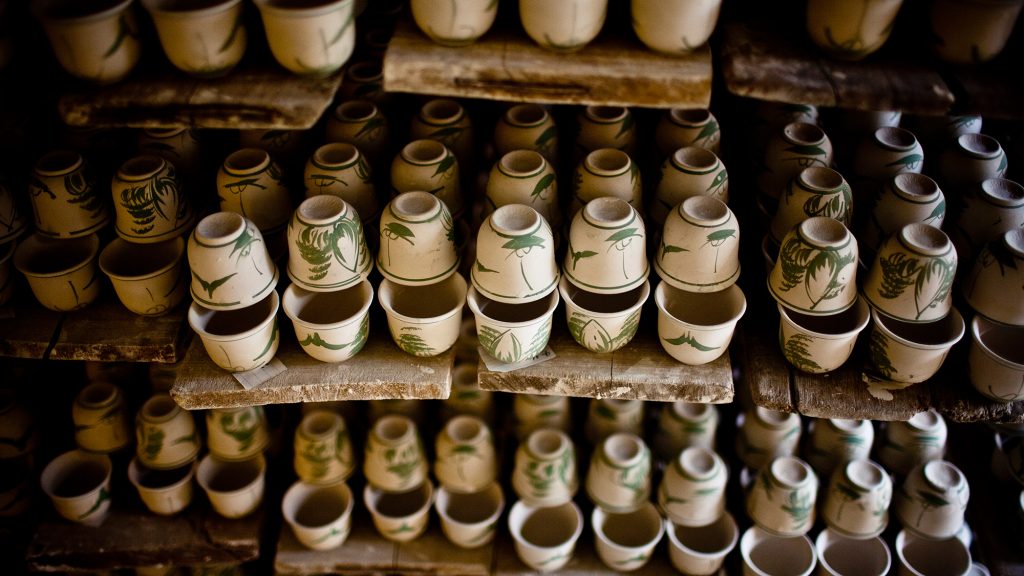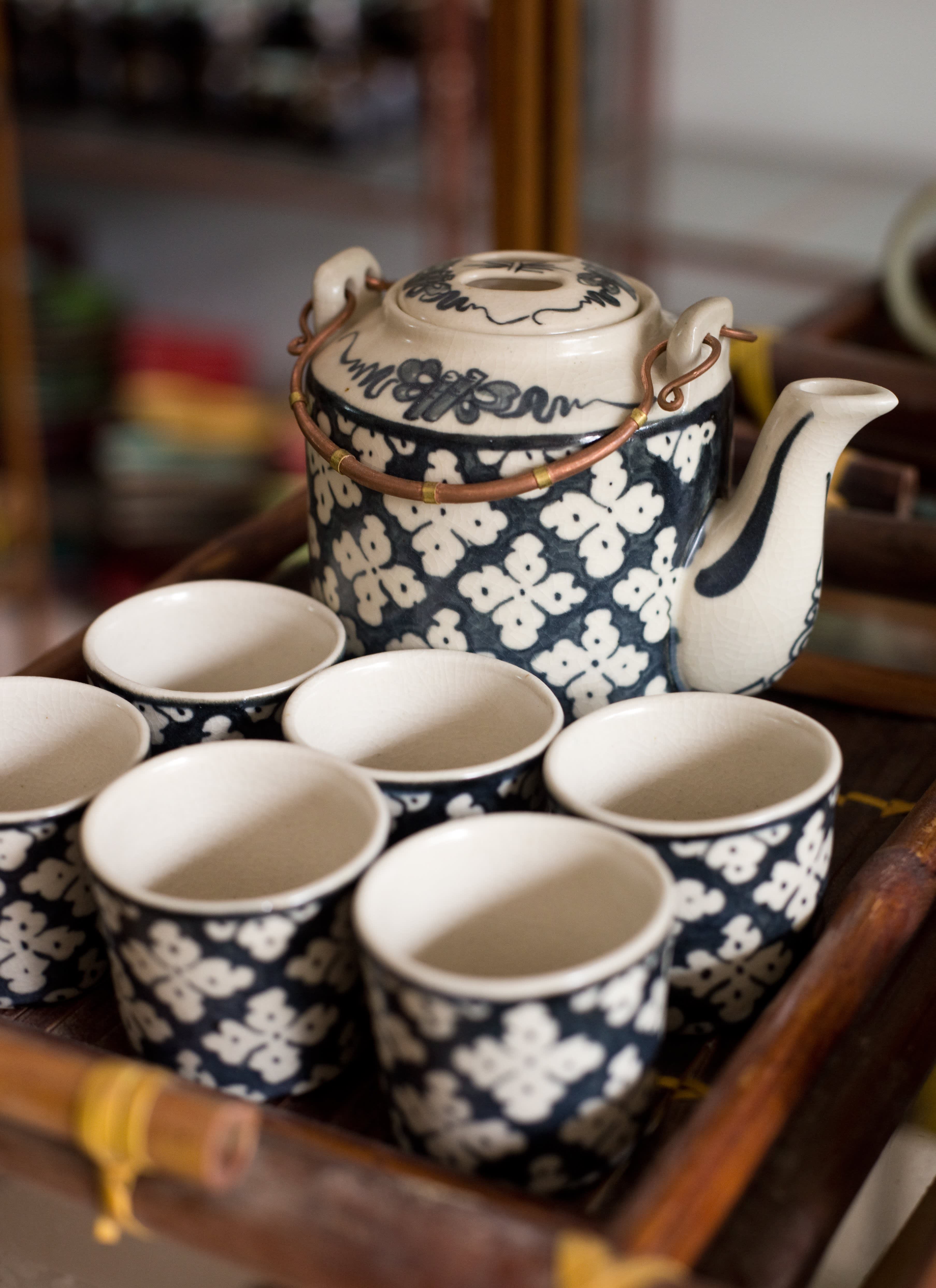News
Understand the Economic Impact of Bat Trang Ceramics
Bat Trang ceramics have long been celebrated for their exquisite craftsmanship and cultural significance. Originating from Bat Trang village in Vietnam, these ceramics not only represent an important facet of Vietnamese heritage but also play a crucial role in the local and national economy. The economic impact of Bat Trang ceramics extends beyond traditional boundaries, influencing various sectors such as tourism, export, and small-scale artisanal industries. This article delves deeply into the multifaceted economic implications of Bat Trang ceramics, analyzing their historical evolution, production dynamics, market trends, and future prospects.
Historical and Cultural Significance of Bat Trang Ceramics

To fully appreciate the economic impact of Bat Trang ceramics, it is essential first to understand their historical roots and cultural value. These elements underpin the product’s market appeal and economic viability.
Origins and Evolution of Bat Trang Ceramics
Bat Trang ceramics trace back over 700 years to the Le Dynasty era in Vietnam. The village’s unique geographic position near the Red River provided rich alluvial clay deposits ideal for pottery. Over centuries, Bat Trang artisans refined their techniques, developing distinctive styles characterized by white-glazed porcelain with intricate designs.
The continuous evolution of ceramic technology in Bat Trang—from rudimentary kiln structures to modern firing methods—illustrates an adaptive craft that has sustained its relevance through Vietnam’s socio-political changes.
Cultural Symbolism and Artistic Value
Bat Trang ceramics are not mere household items; they embody deep cultural symbolism. Patterns often draw from traditional Vietnamese iconography, such as lotus flowers, dragons, and phoenixes, which convey meanings of prosperity, protection, and harmony. The meticulous hand-painting represents a fusion of artistry and storytelling.
This cultural richness elevates Bat Trang ceramics beyond utilitarian objects to coveted artifacts, attracting collectors and scholars worldwide. Such a status significantly enhances their economic value.
Influence on Local Identity and Community
The ceramic craft forms the backbone of Bat Trang village’s identity. Entire generations engage in pottery-making, creating a community tightly knit by shared skills and traditions. The economic sustenance derived from ceramics directly improves living standards and nurtures social cohesion.
Furthermore, this localized economic activity helps preserve intangible cultural heritage while fostering pride among residents, reinforcing the sustainability of the craft as an economic enterprise.
Production Dynamics and Economic Structure

Understanding the economic impact of Bat Trang ceramics requires examining how production is structured and managed within the village and the broader region.
Artisanal Workshop Networks
Production in Bat Trang is predominantly based in family-run workshops. These micro-enterprises specialize in various stages of ceramic creation—from clay preparation, shaping, glazing, to firing and decoration.
Such decentralized production encourages skill specialization and innovation while maintaining flexibility to adapt to changing market demands. It also creates employment opportunities at multiple levels, from unskilled labor to artisan masters.
Supply Chain and Raw Material Sourcing
The supply chain for Bat Trang ceramics involves sourcing high-quality kaolin clay, glazes, and pigments. While some raw materials are locally available, others require importation, which influences production costs and pricing strategies.
Efficient supply networks ensure timely availability of inputs, critical in meeting both domestic and international orders. This interdependence also exposes producers to global market fluctuations, impacting profit margins.
Technological Integration and Modernization
Though rooted in tradition, many Bat Trang workshops have begun integrating modern technologies such as electric kilns, computer-assisted design, and quality control systems.
These advancements increase production capacity and consistency, enabling competitiveness in mass markets without sacrificing the artisanal touch. However, balancing mechanization with craftsmanship remains a delicate challenge that shapes economic outcomes.
Market Trends and Economic Contributions

The economic impact of Bat Trang ceramics can be further understood by analyzing market demand, revenue generation, and contributions to related industries.
Domestic Demand and Cultural Consumption
Within Vietnam, Bat Trang ceramics enjoy widespread popularity for their aesthetic appeal and cultural significance. They are used in traditional ceremonies, home décor, and gift-giving practices, sustaining strong domestic consumption.
Retail outlets, markets, and cultural festivals provide platforms for sales, stimulating the local economy and encouraging entrepreneurial ventures centered around ceramic products.
Export Markets and Global Reach
Bat Trang ceramics have successfully penetrated international markets, particularly in Asia, Europe, and North America. Their unique blend of tradition and quality appeals to niche consumers seeking authentic artisanal goods.
Export revenues contribute significantly to the regional economy, supporting foreign exchange earnings and enhancing Vietnam’s reputation as a source of cultural crafts. However, exporters face challenges such as compliance with international standards and competition from cheaper imitations.
Tourism and Ancillary Economic Benefits
Ceramic-themed tourism has become a vital economic driver for Bat Trang village. Visitors come to experience workshops, participate in pottery classes, and purchase souvenirs directly from artisans.
This inflow stimulates ancillary businesses including hospitality, transportation, and retail services, creating a multiplier effect that broadens the economic impact beyond ceramics alone.
Socioeconomic Challenges and Opportunities
While the economic benefits of Bat Trang ceramics are substantial, the industry confronts several hurdles that could impede sustainable growth if not addressed.
Competition and Market Saturation
Increasing competition from synthetic alternatives and low-cost imports threatens the market share of genuine Bat Trang ceramics. Additionally, market saturation in traditional product lines necessitates innovation to sustain consumer interest.
Addressing these concerns requires strategic branding, diversification of product offerings, and investment in quality enhancement.
Labor Issues and Skill Transmission
An aging artisan workforce and declining youth participation pose risks to the continuity of ceramic craftsmanship. Economic migration and alternative career opportunities lure younger generations away from traditional vocations.
Developing training programs and incentivizing apprenticeships are critical to preserving skilled labor and ensuring generational knowledge transfer.
Environmental Sustainability and Resource Management
The ceramic production process entails significant energy consumption and raw material extraction, raising environmental considerations. Unsustainable practices could lead to resource depletion and ecological damage.
Adopting eco-friendly technologies and waste management protocols offers opportunities to enhance the industry’s sustainability profile, aligning with global green economy trends.
Future Prospects and Strategic Recommendations
The trajectory of Bat Trang ceramics’ economic impact hinges on harnessing strengths and addressing weaknesses through proactive strategies.
Innovation and Product Diversification
Expanding product categories to include contemporary designs, functional household items, and art installations can tap into new market segments.
Collaborations with designers and artists may inject fresh creativity while respecting traditional aesthetics, thus broadening appeal.
Digital Marketing and E-Commerce Expansion
Leveraging digital platforms for marketing and sales can overcome geographical limitations and reach wider audiences globally.
Investing in e-commerce infrastructure, social media engagement, and storytelling about artisanal heritage will enhance visibility and consumer loyalty.
Policy Support and Industry Collaboration
Government policies favoring craft preservation, export facilitation, and financial incentives will strengthen the industry’s foundation.
Fostering collaboration among artisans, cooperatives, and research institutions can promote knowledge sharing, joint marketing efforts, and innovation diffusion.
Sustainable Practices and Certification
Implementing sustainable production methodologies and obtaining eco-certifications can attract environmentally conscious consumers.
Transparency in sourcing and manufacturing processes boosts brand credibility and aligns with evolving market expectations.
Conclusion
The economic impact of Bat Trang ceramics is multifaceted, intertwining cultural heritage with contemporary market realities. As a symbol of Vietnamese craftsmanship, Bat Trang ceramics sustain local livelihoods, stimulate regional economies, and contribute meaningfully to export revenues and tourism development. However, the industry faces challenges from market competition, labor dynamics, and environmental concerns that must be proactively managed. By embracing innovation, modernization, and sustainable practices, Bat Trang ceramics can continue to thrive economically while preserving their invaluable cultural legacy. Ultimately, the continued success of Bat Trang ceramics will depend on balanced strategies that honor tradition, adapt to changing consumer behaviors, and leverage emerging economic opportunities.
